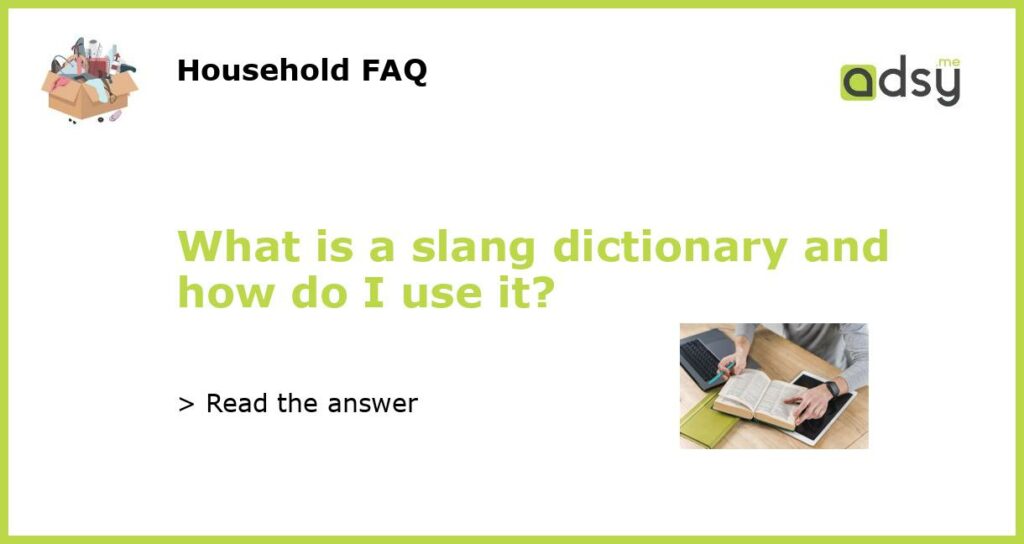What is a Slang Dictionary?
A slang dictionary is a reference book or online tool that lists and defines non-standard vocabulary used in specific regions, communities, or professions. Slang is defined as an informal, often playful language used by a specific group of people, which is not typically found in standard English dictionaries. These dictionaries may include slang words and phrases, along with their meanings, origins, and usage examples.
Why Use a Slang Dictionary?
Using a slang dictionary can help people understand the nuances of language used by different communities. For instance, it can be useful for someone traveling to a new region, where they may encounter unfamiliar colloquialisms. It can also serve as a helpful resource for writers, poets, musicians, and other creatives, who may want to include slang in their work to convey a specific tone or emotion.
How to Use a Slang Dictionary?
When using a slang dictionary, it’s important to keep in mind that usage and meanings of slang words may vary depending on geographical region, age, and other factors. Therefore, in order to use it effectively, it’s necessary to have a basic understanding of the context in which the term is being used. A slang dictionary may be organized alphabetically or thematically, and typically includes pronunciation guides, usage notes, and examples of the slang in context.
Popular Slang Dictionaries Online
Some popular slang dictionaries online include Urban Dictionary, Slang.org, and ThoughtCo. These online resources may include user-generated content, which can result in inaccuracies or offensive language included in the definitions. Therefore, it’s important to exercise caution and critical thinking when using these resources.
In conclusion, a slang dictionary is a valuable resource for anyone who wants to understand the informal language used by different communities. When using one, it’s important to keep in mind the context in which the term is being used, and to be cautious of user-generated content. With a basic understanding of how to use them, these resources can expand our understanding of language and the way it’s used to convey human experience.






